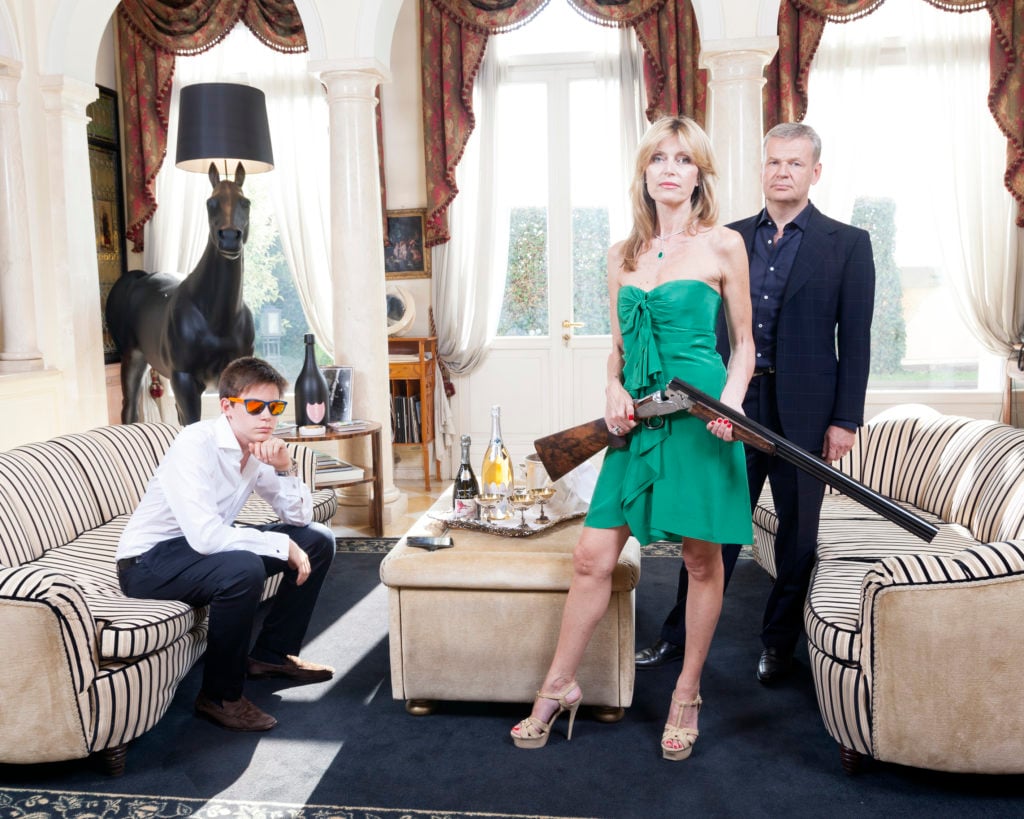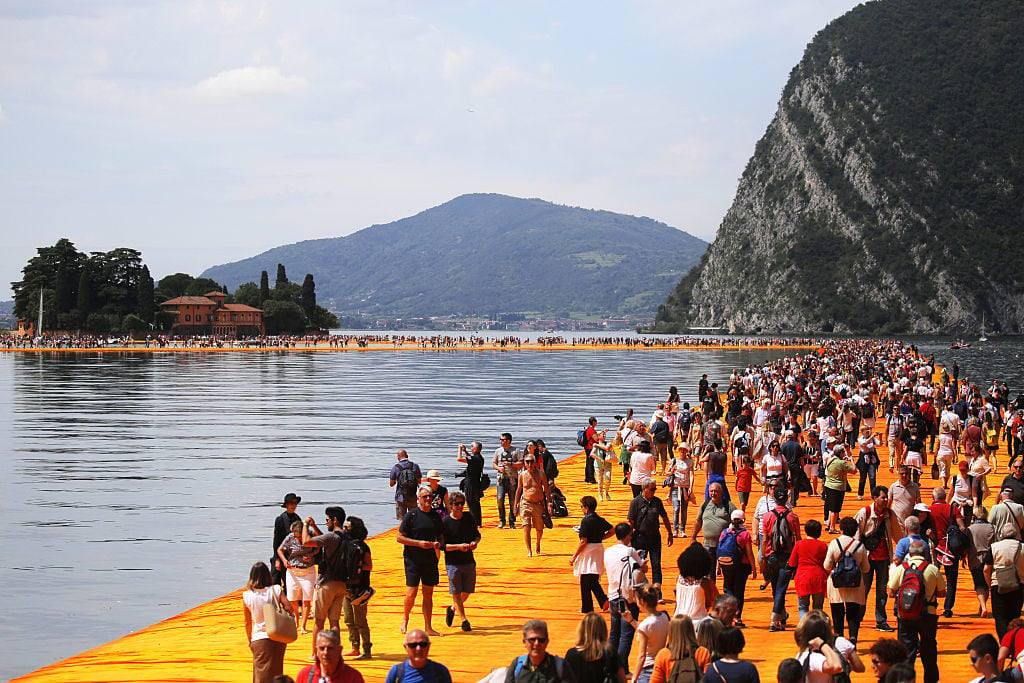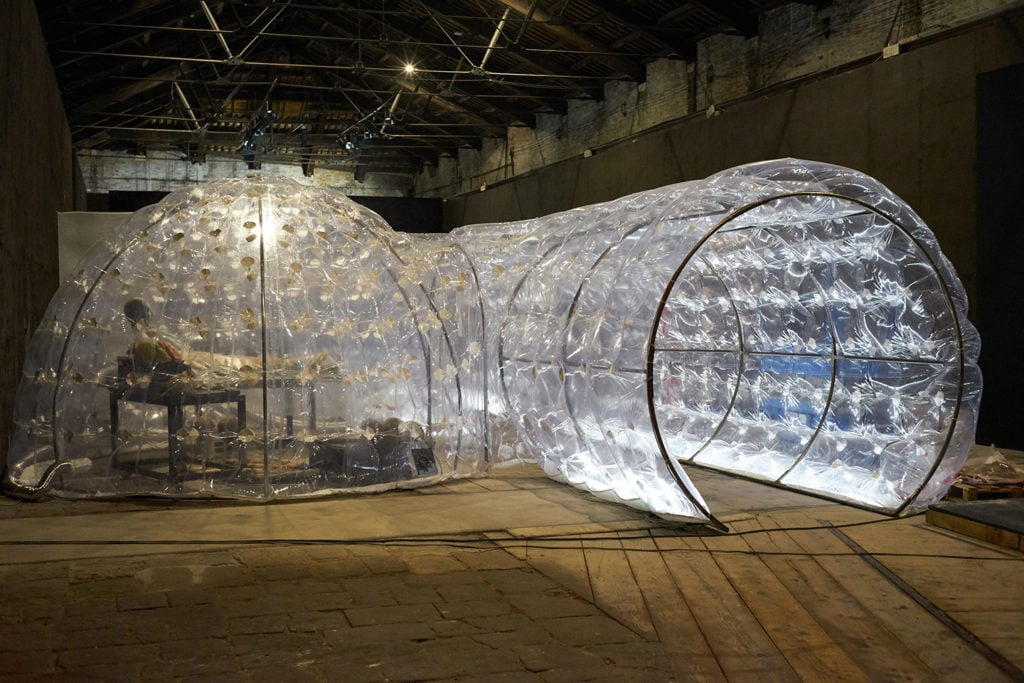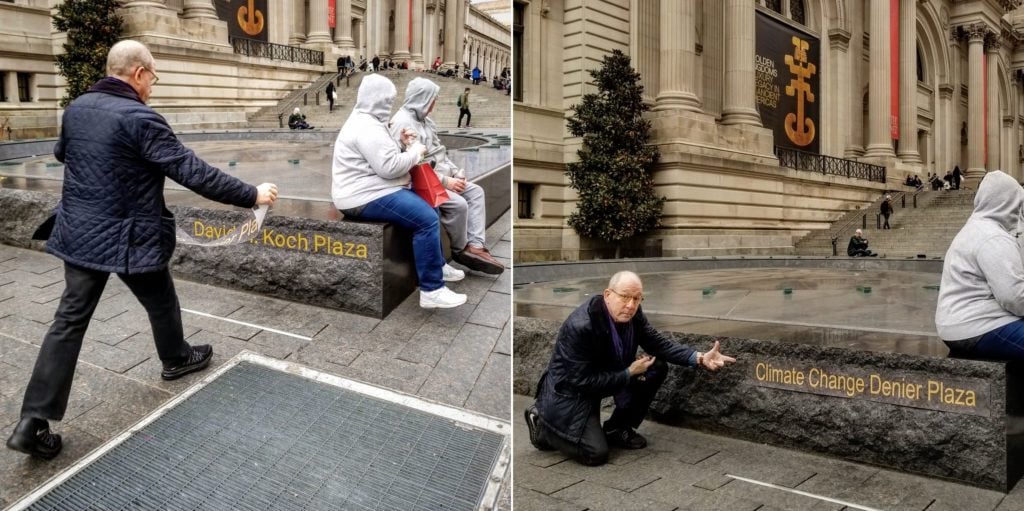People
Meet the Beretta Family, the Art-Savvy Gun Makers Who Back the NRA and the Venice Biennale
Amid heightened scrutiny of the sources of cultural funding, the family has so far managed to stay out of the crosshairs.

Amid heightened scrutiny of the sources of cultural funding, the family has so far managed to stay out of the crosshairs.

Rachel Corbett

In recent months, the question of whether cultural institutions have a responsibility to reckon with the source of a donor’s wealth has come into sharp focus. Protests against the philanthropic Sackler family’s ties to the opioid crisis and, before that, the Metropolitan Museum of Art’s relationship with fossil-fuels billionaire David Koch and Tate’s with the oil company BP have placed unprecedented scrutiny on philanthropists.
But even as the gun-control debate reaches new heights in the US after February’s massacre at a high school in Parkland, Florida, few Americans are familiar with the Berettas, the 500-year-old Italian gun manufacturing family whose current matriarch is a prominent art collector and patron.
Umberta Gnutti Beretta, the wife of 15th-generation Beretta scion and CEO Franco Beretta, has recently funded the Venice Biennale, the Poldi Pezzoli museum in Milan, and the Brescia Museums Foundation in northern Italy.
She is also an avid contemporary art collector, buying work by Vanessa Beecroft, Tracey Emin, Terry O’Neill, and David LaChapelle, among others. Two years ago, the Beretta family lent their private island on Lake Iseo to Christo to build his fabric walkway-on-water The Floating Piers (2016).

Christo’s Floating Piers (2016). Photo: MARCO BERTORELLO/AFP/Getty Images.
The family is also behind one of the world’s largest manufacturers of hunting rifles, handguns, assault and military weapons. In the 16th century, the company started out as a one-man operation in the Italian Alps that supplied the Arsenal of Venice (now home to the Venice Biennale). Since then, the Beretta name has become a global luxury lifestyle brand—and a supplier of arms to governments run by Napoleon, Mussolini, and George W. Bush.
The company first expanded to the US in the 1970s with a headquarters in Maryland, but after the massacre at Sandy Hook Elementary School in 2012, the state banned assault weapons and Beretta moved its US factory to Tennessee, where the gun laws are looser and the tax credits larger.
Today, more than half of Beretta’s revenues are generated from gun sales in the US, while the umbrella Beretta Group reported $841 million in earnings in 2016. Perhaps unsurprisingly, the company is also a supporter of the NRA, donating more than $2 million to the American gun lobbyists over the years.
“In America, a lot of people take too much drugs and medication. If you are a sane person you can own a gun responsibly for all your life,” Umberta Gnutti Beretta told artnet News in an email. “Mass shootings are a very American issue. Italians, including myself, are sad about it, and hope that you will find a way to solve the problem.”
Those who accept money from members of the Beretta family are quick to point out that the funds do not come from the company itself or its CEO, but from Umberta Gnutti Beretta personally.
The support for the 2017 Italian Pavilion at the Venice Biennale was “a personal individual donation from Umberta Gnutti, who has had a very long history of philanthropy even before marrying Franco Beretta,” Cecilia Alemani, the pavilion’s curator, told artnet News. (Umberta’s family runs the aluminum manufacturing company Almag.)

Roberto Cuoghi, Imitazione di Cristo (2017) at the Italian Pavilion, Venice Biennale. Photo: Marco De Scalzi.
Luigi di Corato, the director of the Brescia Museums Foundation, which oversees a complex of art institutions and historical sites in northern Italy, echoed this sentiment, pointing out that Gnutti Beretta “is the daughter of a great collector of Old Masters and contemporary art, has her own collection, and I know that she is supporting art institutions like us using her personal resources.”
Neither Alemani nor di Corato responded when asked if or how they had established that Gnutti Beretta’s money is separate from her husband’s. Christo declined to comment on his decision to accept the Berettas’ support for the making of The Floating Piers.
“I consider myself an independent person,” Gnutti Beretta said. “I would consider myself an independent woman even if I was living off my husband’s money, and even more so when I am not.”
But some see the art world’s acceptance of Beretta family money as indicative of a willful ignorance that is typical in the industry at a time when funding for ambitious projects is hard to come by.
“The art world’s moral standards and boundaries are extremely loose,” said curator Francesco Bonami, who directed the 2003 Venice Biennale. “When drawing a line means giving up substantial funding coming from individuals or foundations in countries where human rights are, to say the least, considered humorous, no institution or even single artist will step back. This goes also for funds coming from collectors whose moral standards are disputable and the sources of their wealth are murky or outright despicable—like manufacturing firearms used to kill people or kill animals as a luxury pastime.”
The pressure to reject funding from controversial donors has been mounting in recent years. Back in 1969, the tobacco giant Philip Morris Europe sponsored Harald Szeemann’s landmark exhibition “When Attitudes Become Form” at the Kunsthalle Bern. When Bruce Altshuler, the director of museum studies at New York University, interviewed participating artists about whether they had any moral qualms with the sponsor, “their response was that they thought it was fine, especially since they were given free cigarettes by the company,” he said.
But things started to shift in the 1990s. The artist Adrian Piper withdrew her work from a 1995 show at the Los Angeles County Museum of Art after learning it had been sponsored by Philip Morris.
Today, pressure from artists and activists is reaching a critical mass. Last month, the photographer Nan Goldin led a protest in the Sackler Wing of the Met to demand that the museum, and others like it, reject money from the family, which founded Purdue Pharmaceuticals, the manufacturer of Oxycontin. Meanwhile, art critic Jerry Saltz taped over the David H. Koch Plaza signage on the fountain outside the Met with new lettering that read: “Climate Change Denier Plaza.”

Jerry Saltz (@jerrysaltz): Went to David H. Koch Plaza in front of @metmuseum to take back our museum from a climate denier. Placed this over the name; left it there.
⚔⚔⚔⚔⚔. Image and caption via Twitter.
But in Italy, “fundraising is something recent and not so developed in our country, so we do not have specific rules or reviewing processes to follow,” said di Corato of the Brescia Museums Foundation. Funding for the Venice Biennale’s Italian Pavilion is approved by both the Biennale itself and the Italian Ministry of Culture. Ralph Rugoff, the artistic director of the 2019 Biennale, did not respond to requests for comment on what vetting processes are currently in place.
When asked whether she thinks institutions should factor in political or ethical questions when accepting donations, Gnutti Beretta said she doubts that institutions can ever eliminate controversial revenue sources.
“The private sector will always be needed alongside the public sector to make it work,” she said. “So should it be firearms, cigarette producers, non-ethical manufacturers, democrats, republicans—it is very likely that some of the funding an institution receives might not correspond to the views of the audience.”
Regardless, she added, Beretta should not be considered an unethical source of revenue, since the company largely manufactures sporting firearms. “If you look at all the unfortunate events that have hit your country Beretta is definitely not the type of firearm used,” she said.
However, Beretta guns were used in the 2014 murder of four high school students in Marysville, Washington; the 2009 murder of 13 people in Binghamton, New York; the 2004 murder of four people at a Pantera concert in Columbus, Ohio; and in the 2005 murder of seven members of a Wisconsin church congregation. Beretta semi-automatic pistols were also found among the possessions of Stephen Paddock, the shooter in the 2017 Las Vegas massacre.
Beretta guns have also become glamorized as symbols of violent crime in pop culture. Bruce Willis used a Beretta in Die Hard; Mel Gibson used one in Lethal Weapon. In 2001, Dr. Dre rapped, “As long as I got a Beretta, nigga, I’m down for whateva”—a line that Umberta and Franco Beretta’s son, Carlo, quotes in his Instagram bio.
The association is enough to deter some curators from working with the Beretta family. “Would I want their money for one of my projects?” asked Bonami. “No. I truly don’t like guns for what they do and what they stand for. A gun is not like a drug. The only effect it has is to hurt or kill people. You can maybe make an exception for clay pigeon shooting, but in that case I don’t think Beretta will have much money to spare for the arts.”